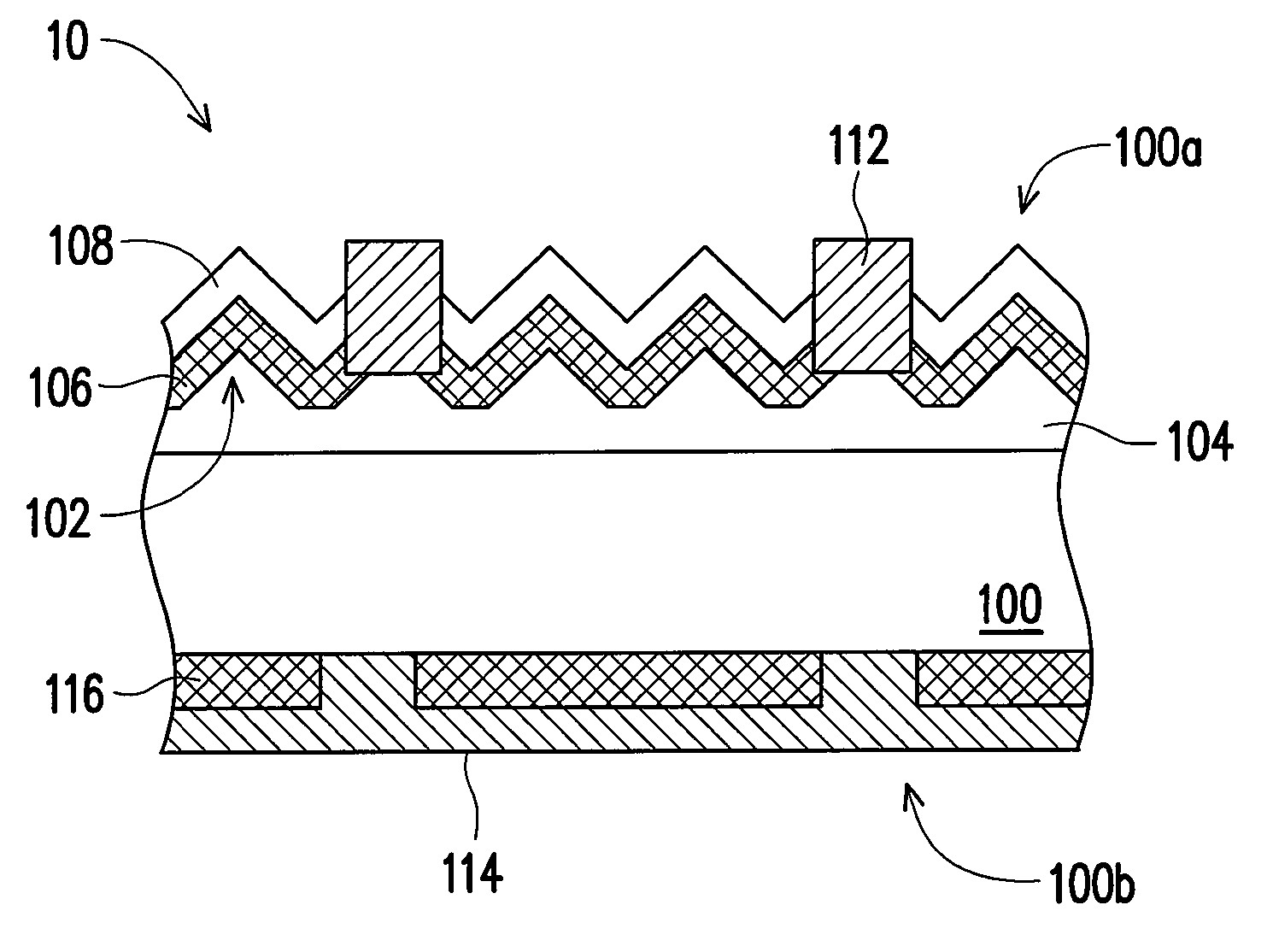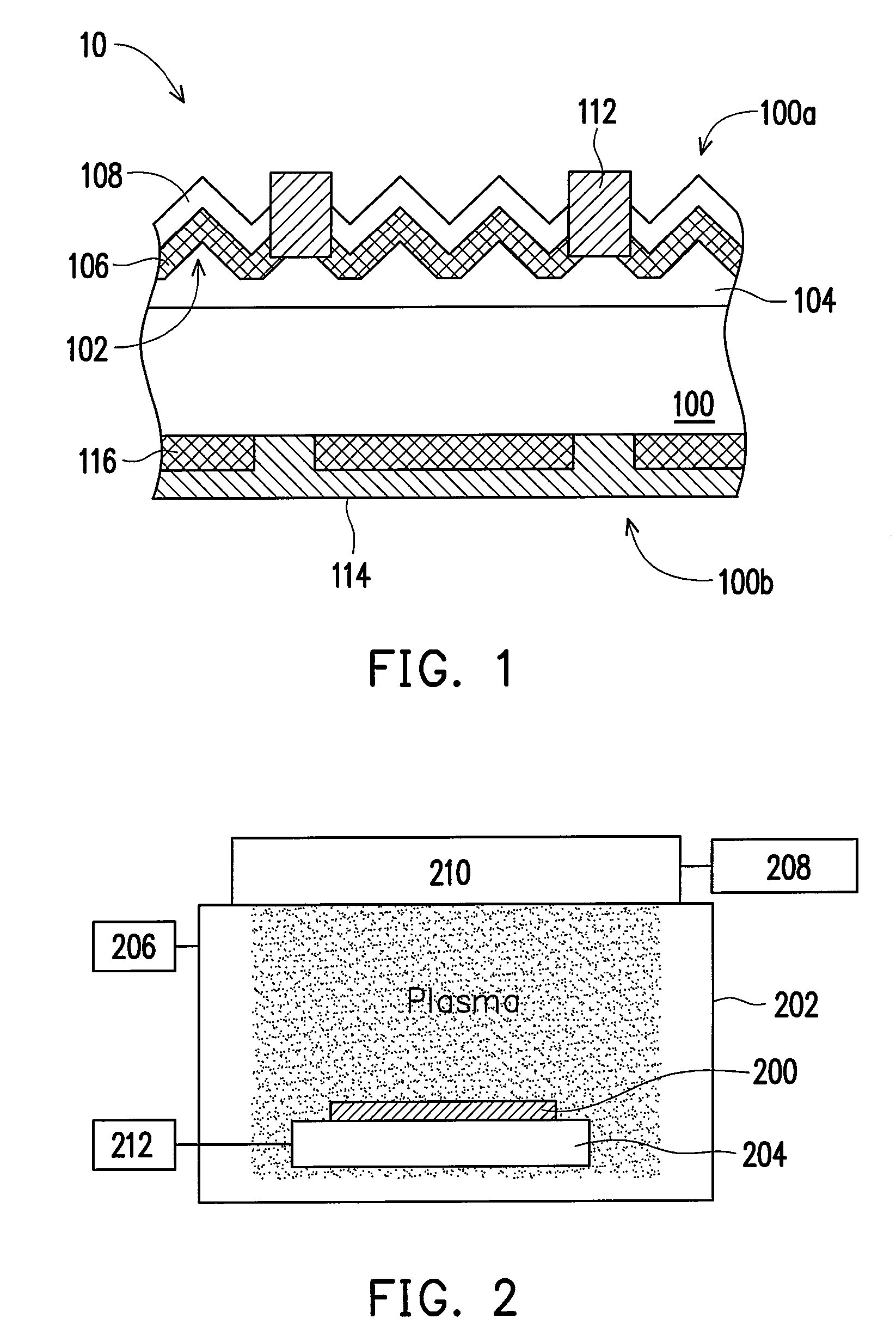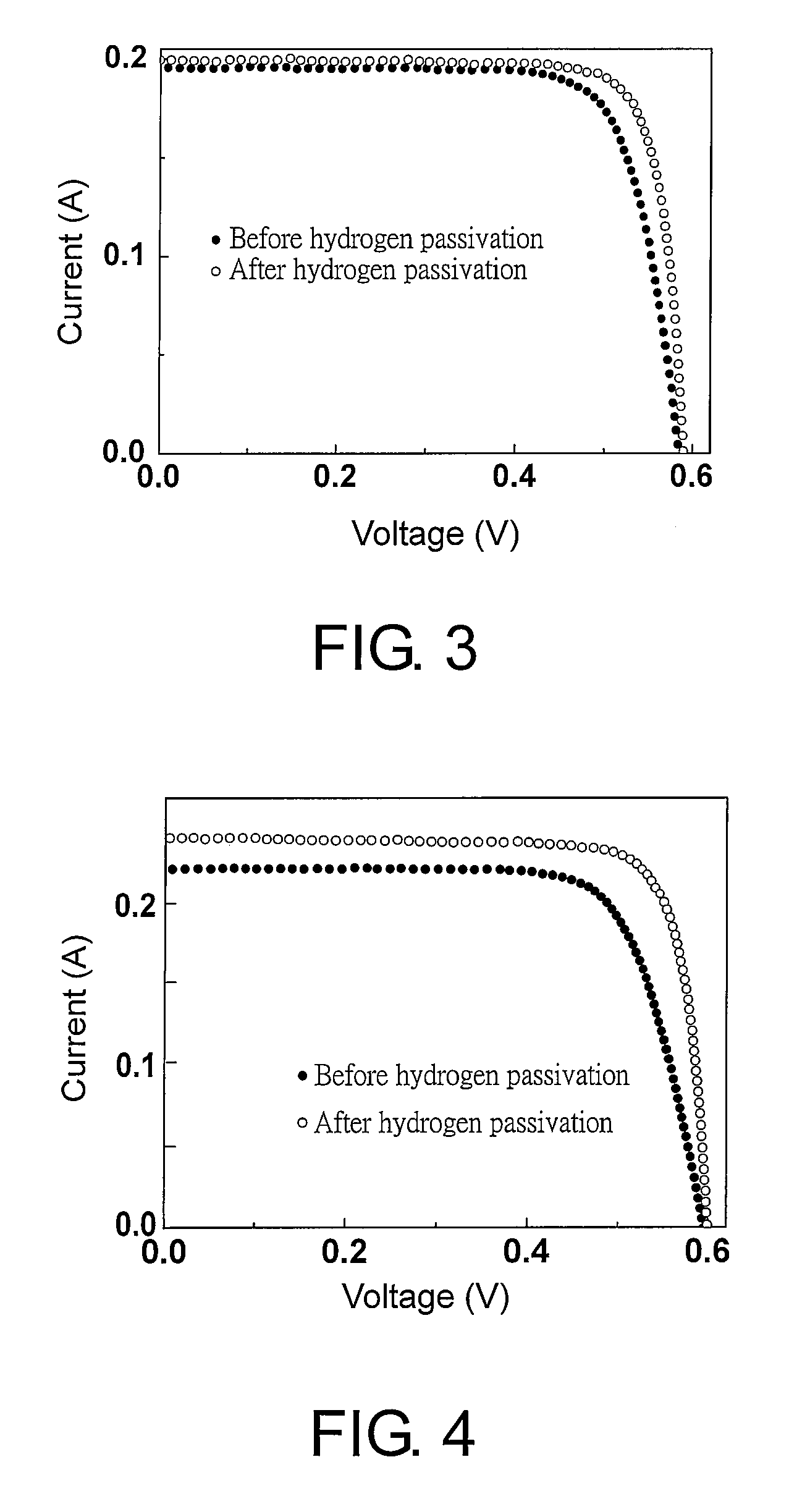Method of fast hydrogen passivation to solar cells made of crystalline silicon
a technology of crystalline silicon and solar cells, which is applied in the direction of sustainable manufacturing/processing, climate sustainability, semiconductor devices, etc., can solve the problems of degrading the conversion efficiency of solar cells, degrading recombination of charge carriers at the surface of crystal lattices, etc., to improve the performance of c-si solar cells, fast hydrogen passivation, and alleviating the detrimental effects
- Summary
- Abstract
- Description
- Claims
- Application Information
AI Technical Summary
Benefits of technology
Problems solved by technology
Method used
Image
Examples
example 1
[0040]In this example, the base pressure of the vacuum chamber is 10−6 Torr, and then hydrogen gas is intruded into the vacuum chamber as a working gas and the pressure is raised to 2 mTorr. The plasma is excited by a RF power (13.56 MHz) through an inductive coupling antenna with a power of 200 W. The plasma density is approximately 1011 cm−3. Furthermore, a bias is applied to the solar cell by a pulse voltage of −4 kV. The pulse width is 10 μsec and the pulse frequency is 200 Hz. In this experiment, no power supply is provided to heat the solar cell, but the temperatures of the samples are approximately 100° C. resulting from the plasma ions implantation. The total process time is 10 min.
[0041]Solar cells are fabricated by mc-Si wafers that are p-type, boron doped to 1×1020 cm−3. Their mean grain size is approximately 5 mm. Random pyramid textures have been made on the front surface of the wafer. N+P junctions are fabricated by diffusion of POCL3 at 850° C. for 20 min. Next, a SiO...
example 2
[0043]In this example, a solar cell made of a monocrystalline silicon wafer is fabricated. The structure and the process of the fabrication are as same as in example 1. In addition, the plasma condition and treatment conditions are also the same. FIG. 4 is the comparison of current-voltage characteristics the solar cell before and after hydrogen passivation. It is shown by the results that the filling factor increases from 75% to 80.77% as a result. Meanwhile, the short-circuit current increases from 0.23 A to 0.25 A and the open voltage increase from 0.59 V to 0.6 V as well. These improvements lead to an increase of the conversion efficiency from 14.25% to 17.06%.
[0044]In view of above, compared with the existing techniques, the present invention can significantly reduce the time and the cost of hydrogen passivation, and effectively improve the efficiency of c-Si solar cells. Furthermore, the implements of this method are simpler and more economical in a mass production process. Th...
PUM
 Login to View More
Login to View More Abstract
Description
Claims
Application Information
 Login to View More
Login to View More - R&D
- Intellectual Property
- Life Sciences
- Materials
- Tech Scout
- Unparalleled Data Quality
- Higher Quality Content
- 60% Fewer Hallucinations
Browse by: Latest US Patents, China's latest patents, Technical Efficacy Thesaurus, Application Domain, Technology Topic, Popular Technical Reports.
© 2025 PatSnap. All rights reserved.Legal|Privacy policy|Modern Slavery Act Transparency Statement|Sitemap|About US| Contact US: help@patsnap.com



